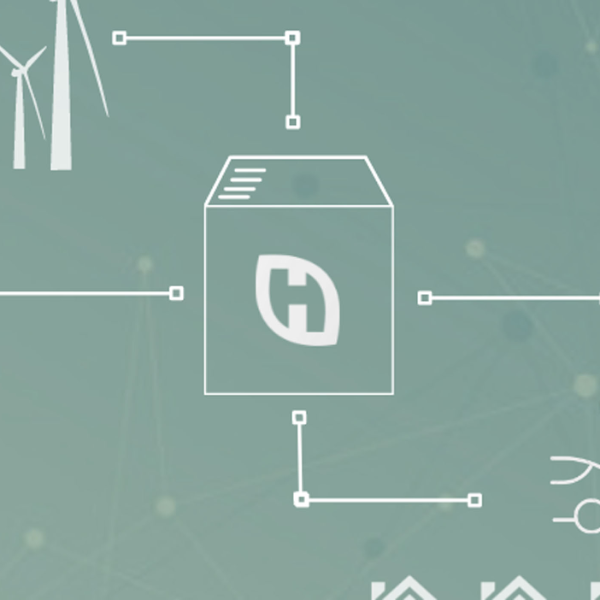Hydrogen pioneers in the built environment

Hydrogen pioneers in the built environment
Big ambitions for hydrogen
'Thinking, daring, acting. The Netherlands may have big ambitions for using hydrogen in mobility and the built environment, but it is lagging behind in achieving them.' According to Hylife Innovations. The current housing and energy crisis requires concrete solutions, fast. With their green InnovaHub power station, Hylife Innovations is converting ambitions into concrete projects generating a solution for the issues facing the energy transition. Hylife Innovations sees Witteveen+Bos as the ideal partner for this project, with knowledge and skills relating to hydrogen, integral expertise as well as the necessary pioneering mentality.
Sustainable living with InnovaHub
We are working more from home, we drive an electric car, and many of us are installing solar panels. That transition requires a different approach to (sustainable) energy management. Jean-Paul Scheurleer, founder of Hylife Innovations and project developer, sees opportunities to raise the sustainability of existing and new build residential areas to a higher level. His objective is to achieve sustainable, completely emission-free districts, both existing and new build. How? With the InnovaHub.
With InnovaHub, Hylife Innovations is focusing on the storage and efficient management of green energy in the built environment. The yield from wind and solar parks brings local benefits. Due to the dependence on the weather conditions, however, it creates an imbalance between energy generation and consumption. To manage that energy efficiently for residential areas, a reliable system is needed that can deal with this imbalance. The InnovaHub is essentially a modular, multifunctional power station that stands between the district and the wind and solar parks, coordinating supply and demand so that green energy is never wasted.
Learning how to manage energy differently
Green energy is preferably used immediately. InnovaHub's smart energy management system controls supply and demand down to micro level. With smart devices a washing machine can be turned on or an electric car can be charged bi-directionally whenever there is a peak in the energy production. Overproduction of energy is stored in the station in batteries/electric cars, thermal energy heating and cooling or is converted into green hydrogen which can later be used when there is no wind or not much sunshine. For the conversion to hydrogen, rainwater is collected and used. A unique feature is that the applied combustion boiler on hydrogen does not emit NOx and CO2. It is therefore a complete system for electricity, heat and cooling for existing and new buildings, completely self-sufficient and emission-free.
The use of hydrogen in residential areas is still in its early stages which logically raises the necessary questions and challenges. Jean-Paul explains: 'The energy transition only works with a mix of different technologies. Hydrogen is therefore not the main solution, but one of the solutions. It can easily be used for long-term storage (seasonal) and is therefore a logical choice for this specific solution. In 2019, we put our concept into practice through the Innovahouse. Here, the residents learn to use their energy supply differently. Involving residents and stakeholders is crucial in this process, particularly for such a new technology like this. Unknown is unloved. We also feel a great responsibility; all eyes are on us. It's up to us to make this development a demonstrable success.'
Kindred spirits
After the Innovahouse, Hylife embarked on the next phase: connecting an entire district. The project will be completed this year and includes seventeen different types of residences: an apartment block, semi-detached houses and detached houses. This means that the maximum can be learned from different circumstances. The system is modular and therefore quickly scalable. In this project, Witteveen+Bos is actively involved as system integrator.
Hylife Innovations leads the field in the use of green hydrogen as a sustainable energy carrier in the built environment. The 'tuition fees' in combination with the small-scale launch mean that the project initially requires investments instead of producing yields. Nevertheless, Hylife Innovations and a group of enthusiastic parties, including Witteveen+Bos, proceeded with the district project. The key to the success? The collaboration between kindred spirits with a passion for sustainable energy and a long-term vision. Jean-Paul: 'In such an innovative project, every step is a challenge. You therefore need to have kindred spirits around you with people who also stay on board when things get trickier. I found them in Witteveen+Bos, among others. The collaboration is unique. Despite their size, they are creative and agile. We learn from each other.'
In total, 16 partners are working on the project. Witteveen+Bos is the coordinating party and uses its experience for the further professionalisation and monitoring of the total concept. This includes project management, technical process support and interface management, the permit application, analysing the risks and (future) opportunities, delivering technical basic documents, giving safety workshops and safety calculations and making the necessary contacts.
With the engineering and planning phase nearly completed, the implementation and building phase is approaching. Jean-Paul: 'Now it's time to gather the data and let the technology work. We then want to raise the project to the next level: how can you make project development itself more sustainable? Like circular building, climate adaptation and biodiversity. I see a great role for Witteveen+Bos in this.'
The InnovaHub project is being implemented with Topsector Energy subsidy from the Ministry of Economic Affairs.
More information?
